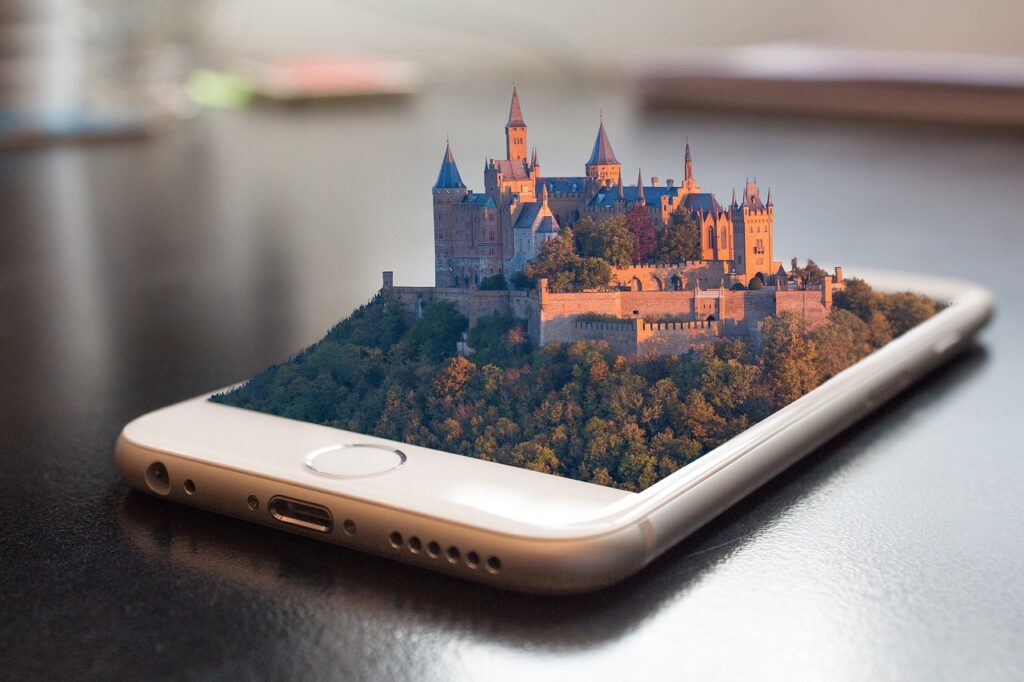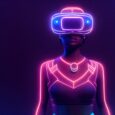
Virtual Reality (VR) is a computer-generated simulation of a three-dimensional environment that can be interacted with through the use of specialized equipment such as a headset with a screen, motion sensors, and hand-held controllers.
Here are some things you should know about VR:
- VR can be used for various purposes, including entertainment, education, training, therapy, and research.
- VR technology has been around for decades but has only recently become more affordable and accessible to consumers.
- The most common type of VR headset uses a screen to display images that appear to surround the user. The headset also has sensors that track the user’s movements and adjust the image accordingly, providing an immersive experience.
- The quality of the VR experience can vary depending on the resolution of the screen, the accuracy of the tracking sensors, and the power of the computer or device running the software.
- VR can be used to simulate real-world scenarios, such as flight simulations, medical procedures, and hazardous environments, providing a safe and controlled training environment.
- VR can also be used for therapeutic purposes, such as exposure therapy for people with phobias or PTSD.
- There are various types of VR experiences, ranging from fully immersive, interactive games to more passive, cinematic experiences.
- VR is still a developing technology, and as such, there are still limitations and challenges to be addressed, such as motion sickness, limited field of view, and the need for high-performance hardware.
Virtual reality has the potential to revolutionize the way we experience the world, providing new ways to learn, explore, and connect with others.
The most common name for a VR headset is simply “VR headset,” but there are many different brands and models available on the market, each with their own specific names.
Some popular VR headset brands include:
- Oculus Quest
- HTC Vive
- PlayStation VR
- Samsung Gear VR
- Google Daydream View
- Valve Index
- Pico Neo 2
- HP Reverb G2
- Varjo VR-2
- XRSpace Mova
It’s worth noting that some VR headsets require a high-end gaming PC to run, while others are standalone devices that do not require a separate computer. Additionally, some VR headsets are designed for specific use cases, such as enterprise training or medical simulations.
Here are some examples of how virtual reality (VR) is being used in the retail industry:
Virtual Try-On:
VR can enable customers to try on clothing or accessories virtually, which can improve the shopping experience and reduce the need for physical try-ons.
This can be especially useful for online retailers, where customers cannot try on items before purchasing.
Virtual Showrooms:
VR can be used to create virtual showrooms that allow customers to explore products and make purchases in a virtual environment.
This can be particularly useful for retailers with limited physical store space, or for showcasing products that are difficult to display in a physical store.
Enhanced Visualizations:
VR can be used to provide more immersive and interactive product visualizations, allowing customers to explore products in greater detail and from different angles.
This can be especially useful for products that are difficult to demonstrate in a physical store, such as furniture or home appliances.
Staff Training:
VR can be used to train retail staff on a variety of topics, such as customer service, product knowledge, and safety procedures.
This can be particularly useful for retailers with a large workforce, or for training staff on complex or hazardous tasks.
Virtual Reality Advertising:
VR can be used to create immersive and interactive advertising experiences, allowing customers to engage with products and brands in new ways.
This can be particularly useful for retailers looking to differentiate themselves from competitors and create a unique brand experience.
VR has the potential to transform the retail industry by providing new ways for customers to explore products, make purchases, and interact with brands.
By leveraging the capabilities of VR technology, retailers can improve the shopping experience, increase customer engagement, and drive sales.
Here are a few examples of retailers that are currently using VR:
Walmart:
The retail giant has been experimenting with VR in several ways.
In 2018, Walmart acquired a VR startup called Spatialand to help with the development of VR shopping experiences.
Walmart has also used VR to train its employees on customer service and compliance, and has tested a virtual reality store tour that allows customers to explore a virtual store and make purchases.
IKEA:
The furniture retailer has created a VR experience called IKEA Place, which allows customers to see how IKEA furniture would look in their homes before making a purchase.
The app uses AR (augmented reality) technology to create a virtual room, which customers can then populate with virtual IKEA furniture.
Lowe’s:
The home improvement retailer has used VR to create a Holoroom experience, which allows customers to design and visualize their home improvement projects in a virtual environment.
The Holoroom uses VR technology to create a 3D model of the customer’s room, which they can then fill with virtual Lowe’s products.
North Face:
The outdoor apparel company has used VR to create a virtual reality climbing experience, which allows customers to experience climbing in some of the world’s most iconic locations.
The experience is designed to promote North Face products and inspire customers to explore the great outdoors.
Audi:
The car manufacturer has created a VR experience that allows customers to customize and explore Audi vehicles in a virtual environment.
The experience is designed to provide a more immersive and interactive way for customers to explore Audi’s lineup of vehicles.
These are just a few examples of how retailers are using VR to enhance the customer experience, drive sales, and differentiate themselves from competitors.
As VR technology continues to evolve, it is likely that more retailers will begin to experiment with its potential applications in the retail industry.

